There’s something incredibly heartwarming about seeing dogs on the big screen. From comedic sidekicks to heroic adventurers, dogs have played a wide array of characters in movies, showcasing their loyalty, intelligence, and endearing personalities.
Dogs have been integral to the film industry, often stealing the show with their on-screen antics and emotive performances. These canine actors can tug at our heartstrings, make us laugh, and inspire us with their bravery, just like their human counterparts.
Dog is a comedy-drama film from 2022. It’s the first movie directed by Channing Tatum and Reid Carolin. The story, written by Carolin and Brett Rodriguez, stars Tatum. He plays an Army Ranger. His job is to take his friend’s military dog, named Lulu, to the friend’s funeral.
But what kind of dog is Lulu? Read on to find out.
What Kind of Dog Is In The Movie Dog
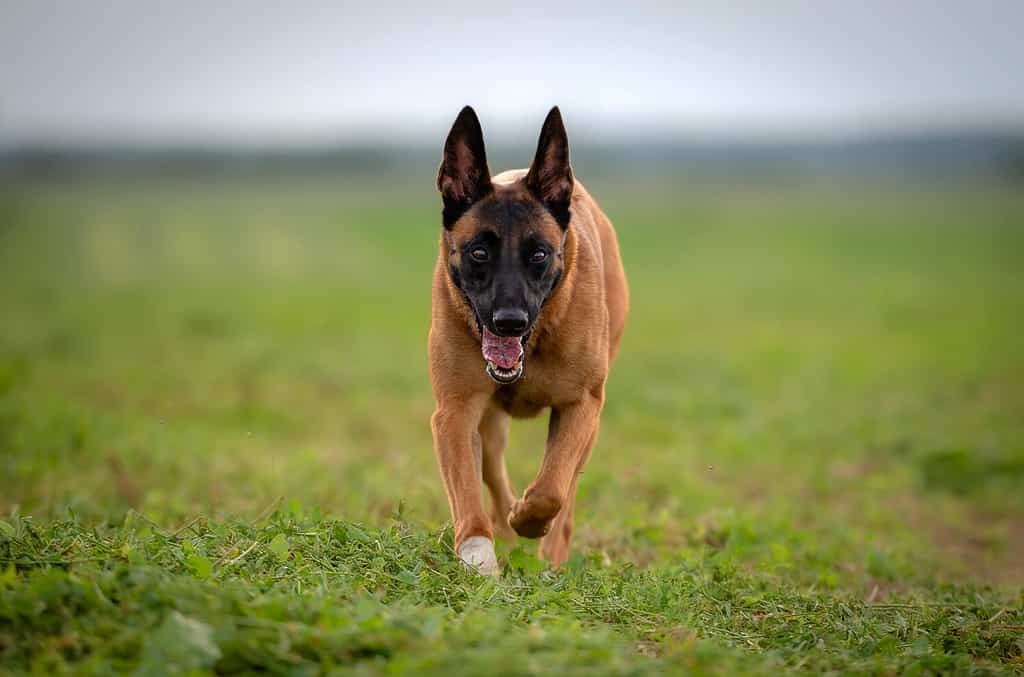
The breed has a long history of being used by military forces and continues to be used by a number of militaries in a variety of roles to this day.
©Julia Malsagova/Shutterstock.com
In the movie Dog, the dog character Lulu is a Belgian Malinois. This dog breed embodies intelligence, athleticism, and versatility. Originally developed in the Belgian city of Malines as a sheepdog, the breed has evolved into a valuable asset across multiple disciplines. From law enforcement to search and rescue missions, the Malinois has made a name for itself as an exceptional working dog.
The breed’s distinctive features include its fawn-to-mahogany short coat, black mask, and alert, intelligent gaze. A hallmark trait is the breed’s boundless energy and drive, which makes it a favorite among handlers seeking high-performance dogs.
However, the Belgian Malinois is not just a working breed. Its loyalty, protective instinct, and intelligence also make it a unique companion for the right owner. This article delves into the fascinating world of the Belgian Malinois, exploring its history, physical characteristics, temperament, care needs, and more.
Origin and History of Belgian Malinois
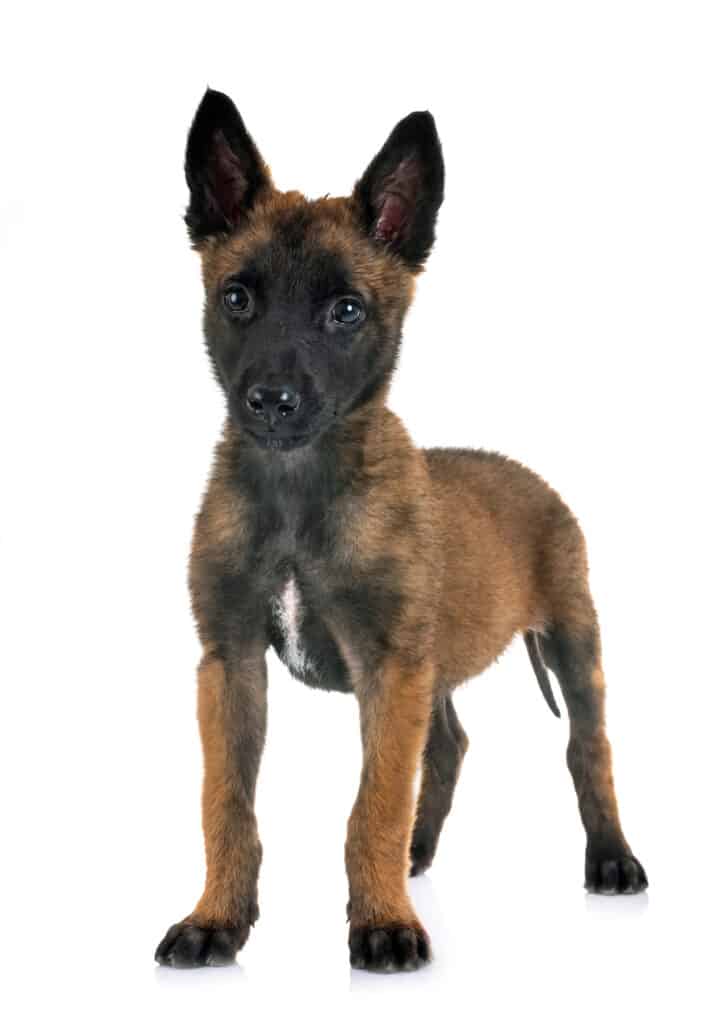
A Belgian malinois puppy looks similar to a German shepherd pup.
©cynoclub/Shutterstock.com
Belgian Malinois, an integral part of Belgium’s pastoral scene, boasts a rich and intriguing history. This section delves into their past, tracing their origins and development over the years.
Ancestry of the Belgian Malinois
Belgium welcomed the birth of the Belgian Malinois in the late 19th century. Breeders originally designed these dogs for herding sheep and other livestock. They named the breed after Malines, the city around which breeders first developed them. Their ancestry ties them closely to the Belgian Shepherd dog, setting the groundwork for their distinctive traits.
When Did the Belgian Malinois Gain International Recognition?
The Belgian Malinois gained international recognition early in the 20th century. The American Kennel Club (AKC) first registered them in 1911. These agile and hardworking dogs quickly captured the attention of dog lovers across the globe. The breed’s reputation as intelligent, trainable, and hardworking dogs grew rapidly, leading to their widespread acceptance and popularity.
Evolution of the Breed
The breed has witnessed significant evolution over the years. Originally bred for herding, the Belgian Malinois found new roles in modern society. Their high intelligence and adaptability allowed them to excel as police and military dogs, search and rescue dogs, and even service animals. Despite their evolving roles, they still retain their strong herding instincts and drive for work. Their physical attributes, while remaining true to their heritage, have seen selective enhancement for their diverse roles.
Physical Characteristics
The Belgian Malinois showcases a blend of elegance and strength in its physical structure as you can see in the movie, Dog. We’ll explore the breed’s defining characteristics, variations, and common health issues in this section.
Physical Features
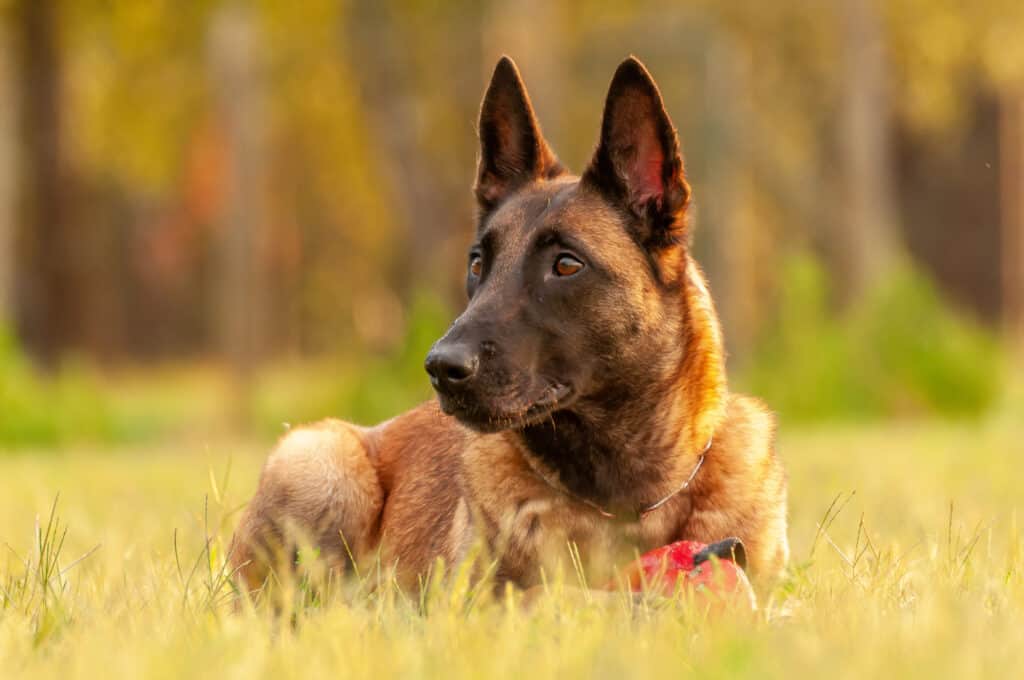
The Belgian Malinois lifespan is generally around 10-14 years.
©Nordantin/Shutterstock.com
The Belgian Malinois stands proud with a square-shaped, well-proportioned body. Typical males stand between 24 to 26 inches, while females range from 22 to 24 inches. Their weight averages between 40 to 80 pounds, showcasing a balance of power and agility.
A distinctive feature of the breed is its expressive, almond-shaped eyes. The color usually ranges from medium brown to dark brown. These eyes, combined with an alert, pricked ear set, give them an attentive and intelligent expression.
Their coat typically fawns to mahogany with a black overlay and is short and weather-resistant. A defining characteristic is a black mask on their face, which contrasts strikingly with their body color.
Variations Within the Breed
While adhering to the breed standard, variations do exist within the Belgian Malinois. Coat colors can range from lighter fawns to deeper mahogany. Some may even exhibit a small white marking on the chest, although it’s not a preferred trait.
Size can also vary, with some dogs being slightly larger or smaller than the breed standard. However, all Belgian Malinois exhibit the same muscular, agile build that makes them excellent working dogs.
Common Health Issues and Lifespan
On average, a Belgian Malinois lives between 10 to 14 years. While they’re typically a healthy breed, they’re susceptible to specific health issues. Elbow and hip dysplasia, which are common in many large breeds, may occur in Belgian Malinois. Eye problems, such as progressive retinal atrophy (PRA) and cataracts, are also potential concerns.
Regular health check-ups and responsible breeding practices can help ensure that a Belgian Malinois leads a healthy, active life. Proactive health management plays a vital role in maintaining the vitality of this robust breed.
Temperament and Personality Traits
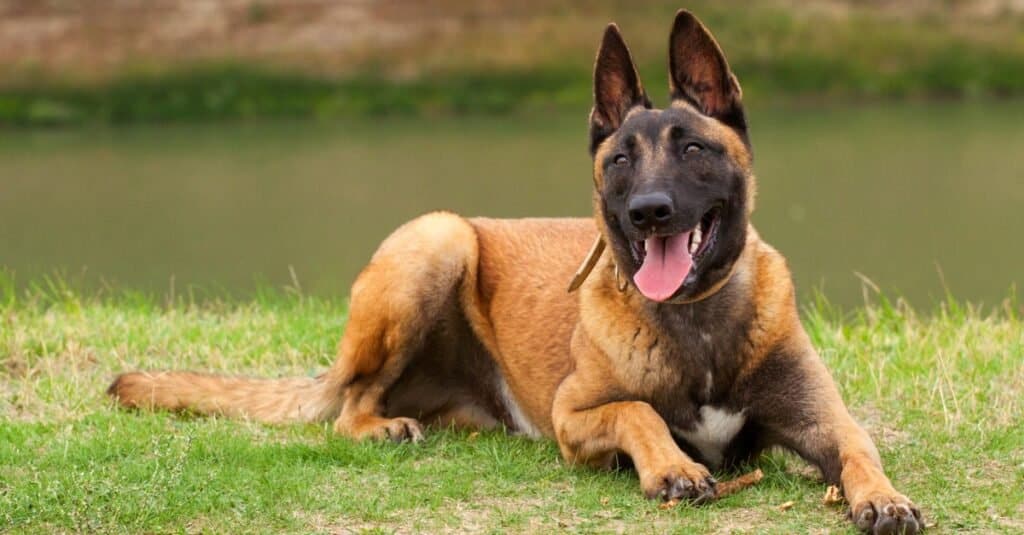
Belgian Malinois have many talents that make them outstanding search and rescue dogs, such as the one in the movie, Dog.
©Fesus Robert/Shutterstock.com
The temperament and personality traits of the Belgian Malinois reflect their working dog heritage.
Belgian Malinois Temperament
The Belgian Malinois possesses an alert and active temperament. They’re eager and quick to respond, reflecting their herding background. Highly intelligent, they excel in problem-solving tasks and require mental stimulation.
They’re also known for their loyalty and protective nature. These dogs form strong bonds with their families and are often reserved with strangers. This combination of traits makes them excellent watchdogs.
Despite their active nature, they can be sensitive and react strongly to changes in their environment. Therefore, consistent, positive reinforcement-based training works best for this breed.
Comparison with Other Breeds
When compared to other breeds, the Belgian Malinois stands out for its high energy levels and work ethic. Unlike some breeds that may be content with a walk, Malinois requires intense exercise and mental engagement.
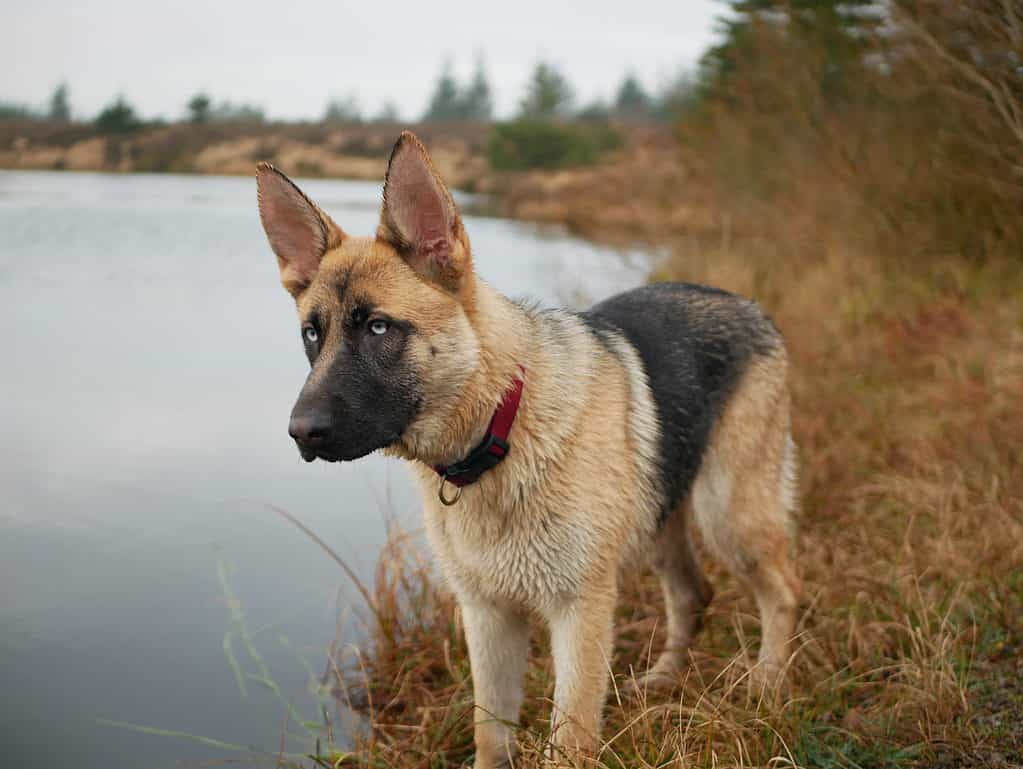
German Shepherds, shown here, are often confused with Belgian Malinois since they can look alike.
©Alan Malone/Shutterstock.com
They share similarities with German Shepherds in terms of intelligence and trainability. However, they tend to be more agile and have a higher drive for work. Their protective nature and loyalty are comparable to other herding breeds, though they may be more reserved.
Suitable Environments
Belgian Malinois thrive in active environments that can satisfy their work drive and energy levels. They’re not well-suited for apartment living and need access to a yard or open space for physical activities.
They excel in homes that provide consistent mental and physical challenges. This makes them ideal companions for active individuals or families involved in dog sports or outdoor activities. However, they may not be suitable for first-time dog owners due to their high training and exercise needs.
Training and Exercise Needs
Training and exercise needs are critical aspects of owning a Belgian Malinois. Let’s delve into their energetic disposition, the importance of stimulation, and the training methods that work best for this breed.
High Energy Levels and Exercise Needs
The Belgian Malinois carries high energy levels, which require proper channeling to maintain a balanced temperament. Physical exercise forms a significant part of their daily routine. Activities can include long walks, running, agility drills, or games like fetch that engage them physically.
However, it’s not just about physical exercise. Mental stimulation is equally crucial for this intelligent breed. Incorporating problem-solving games or training sessions into their routine helps keep them mentally engaged and contented.
Importance of Mental and Physical Stimulation

Belgian Malinois are intelligent and thrive on challenges, like agility training.
Mental and physical stimulation are cornerstones in maintaining a well-adjusted Belgian Malinois. The breed is intelligent and thrives on challenges. Engaging their minds with puzzle toys, obedience training, or scent work activities can help prevent boredom and associated behavioral issues.
Physically, they demand activities that go beyond casual walks. Agility training, herding trials, or participation in dog sports like flyball can fulfill their exercise needs while enhancing their natural skills.
Effective Training Methods and Overcoming Challenges
Training a Belgian Malinois requires consistency, positive reinforcement, and patience. This breed responds well to reward-based training methods that associate good behavior with positive outcomes.
Socialization from a young age is also critical. Introducing them to various people, environments, and situations helps shape a confident and well-behaved dog.
Despite their intelligence, training a Belgian Malinois can present challenges. Their high energy levels and work drive might seem overwhelming for inexperienced owners. Early obedience training, puppy classes, or even professional guidance can be beneficial in these cases. Some of this can be seen in the movie, Dog.
Care and Grooming of the Belgian Malinois
Proper care and grooming form the backbone of a healthy Belgian Malinois’s life.
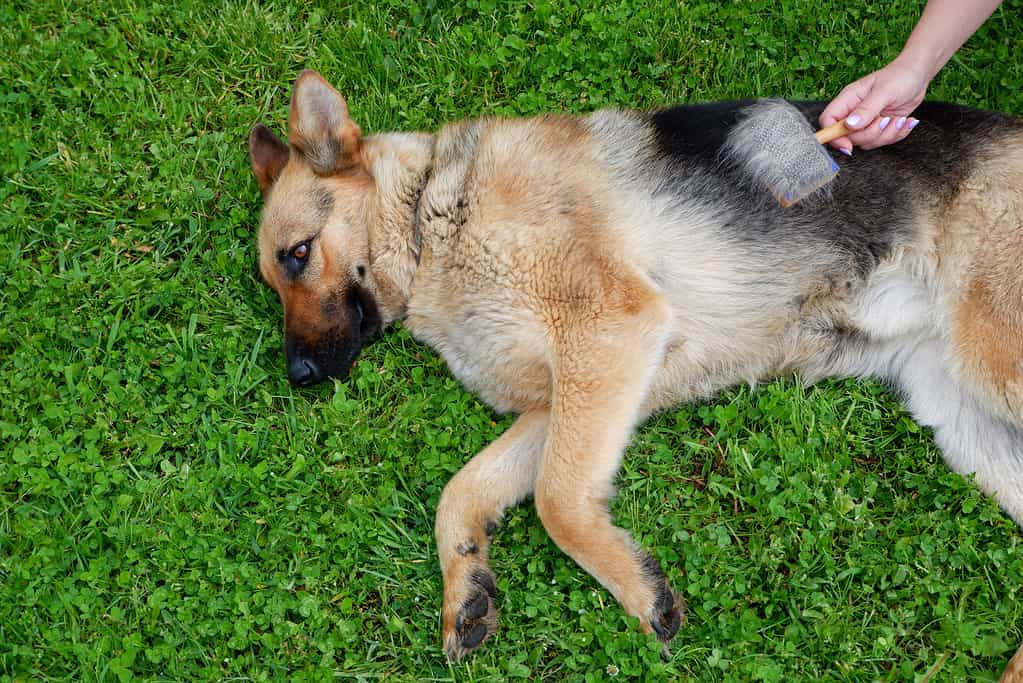
Dog grooming will make your life and your dog’s much easier, and they will enjoy it like this German Shepherd.
©iStock.com/Ana-O
Grooming Needs of the Belgian Malinois
The Belgian Malinois sports a short, weather-resistant double coat that requires minimal grooming. Regular brushing, about once a week, will keep the coat healthy and minimize shedding.
They have two shedding seasons, during which daily brushing might be necessary. Bathing them only when needed helps preserve the natural oils in their coat that keeps their coat healthy and shiny.
Dental hygiene is crucial. Regular tooth brushing prevents dental diseases and contributes to overall health. Nail trimming is also important, especially if they don’t naturally wear them down.
Dietary Requirements and Feeding Schedule
The Belgian Malinois needs a well-balanced diet to fuel its high energy levels. High-quality commercial dog food or a balanced homemade diet under veterinary supervision should suffice.
Feeding schedules can vary. Puppies typically eat three to four small meals a day, while adults do well on two meals. Overfeeding or free-feeding should be avoided to prevent obesity.
Treats can serve as useful training aids but should be given sparingly. Always consider treats as part of their daily caloric intake.
Health Care and Regular Check-Ups
Regular veterinary check-ups are vital for the Belgian Malinois’s health. These visits often include routine vaccinations, dental check-ups, and screening for common health issues.
As with all breeds, early detection of health issues is crucial. Regular at-home check-ups can help spot changes in behavior, appetite, or physical condition that might signal health problems.
The Belgian Malinois can also benefit from preventive care, like parasite control and dental care, as part of their routine health regimen.
Belgian Malinois in Roles of Service
Belgian Malinois are renowned service dogs, making significant contributions to various fields just as you see in the movie, Dog.

The Belgian Malinois breed is commonly used in law enforcement and military service.
The Belgian Malinois in Law Enforcement and Military Services
Belgian Malinois serve valiantly in law enforcement and military contexts across the world. Their intelligence, athleticism, and keen sense of smell make them ideal for this work. They play crucial roles in tasks like search and rescue, detecting explosives, and tracking criminals.
For example, U.S. military forces heavily rely on the Belgian Malinois. Their notable service includes the Navy SEAL mission that led to Osama Bin Laden’s capture, where a Malinois named Cairo was part of the team.
Belgian Malinois as Service Dogs and Therapy Dogs
Beyond law enforcement and military roles, Belgian Malinois also serve as therapy and service dogs. Their intelligence and trainability make them effective at performing tasks for people with disabilities.
As therapy dogs, they provide comfort and emotional support in settings like hospitals, schools, and nursing homes. Their empathetic nature and adaptability make them effective in these roles.
Key Takeaways
The Belgian Malinois is indeed a remarkable breed, as shown in the movie, Dog. Whether serving in law enforcement and military roles, excelling in various dog sports, or being a devoted companion, their intelligence, energy, and versatility are truly impressive. The breed’s unique blend of traits makes them a standout in the canine world.
However, owning a Belgian Malinois is not a commitment to be taken lightly. Their high energy levels and intense drive demand an owner who can provide ample exercise, mental stimulation, and appropriate training. Proper care, grooming, and health management are also essential for the breed’s well-being.
The photo featured at the top of this post is © iStock.com/Sansargo
Ready to discover the top 10 cutest dog breeds in the entire world?
How about the fastest dogs, the largest dogs and those that are -- quite frankly -- just the kindest dogs on the planet? Each day, AZ Animals sends out lists just like this to our thousands of email subscribers. And the best part? It's FREE. Join today by entering your email below.
Thank you for reading! Have some feedback for us? Contact the AZ Animals editorial team.







